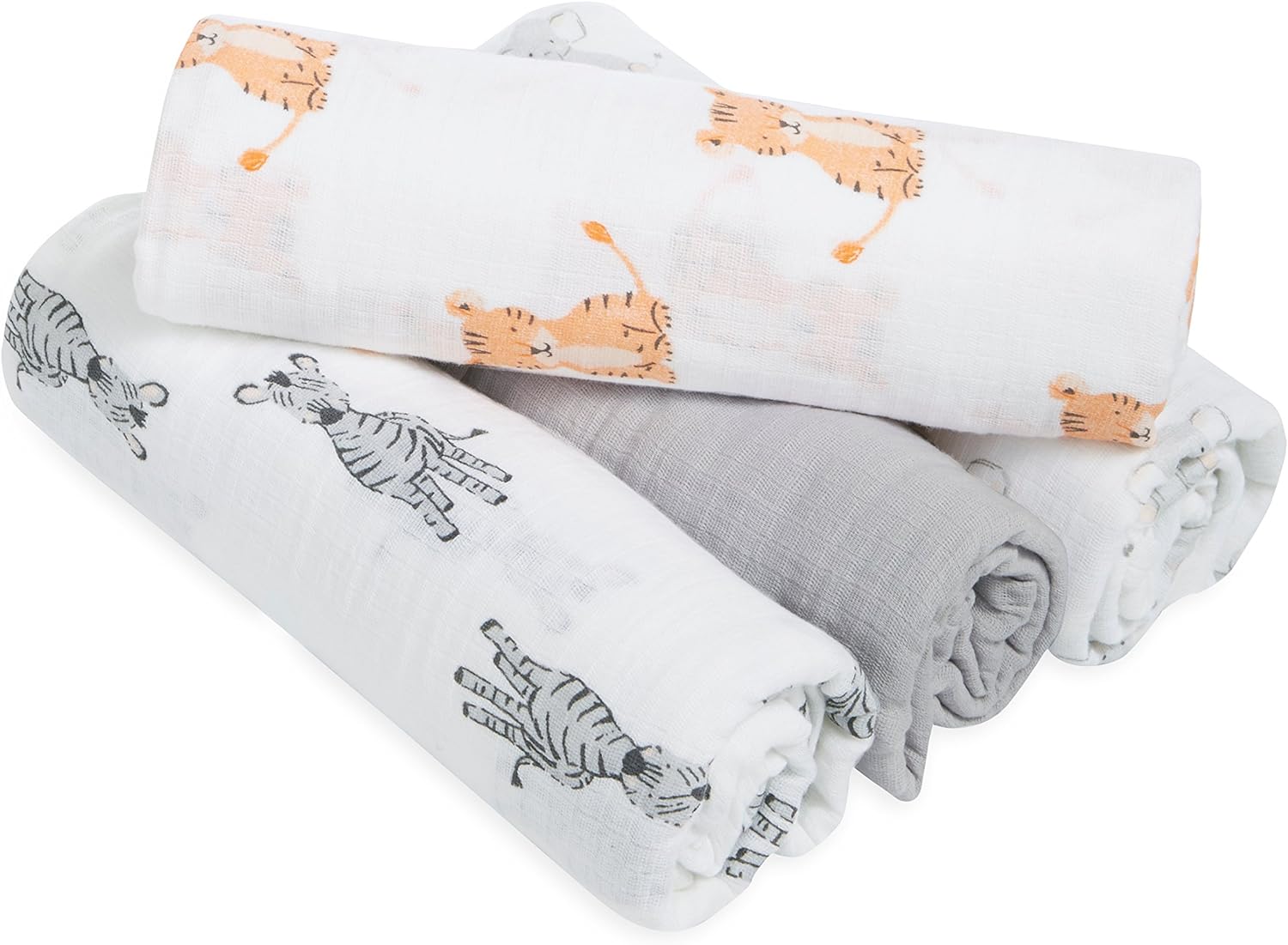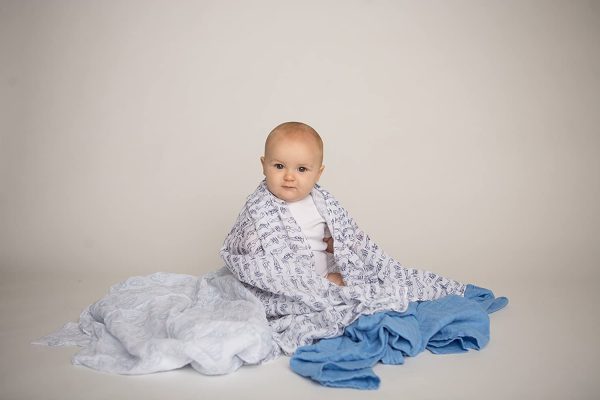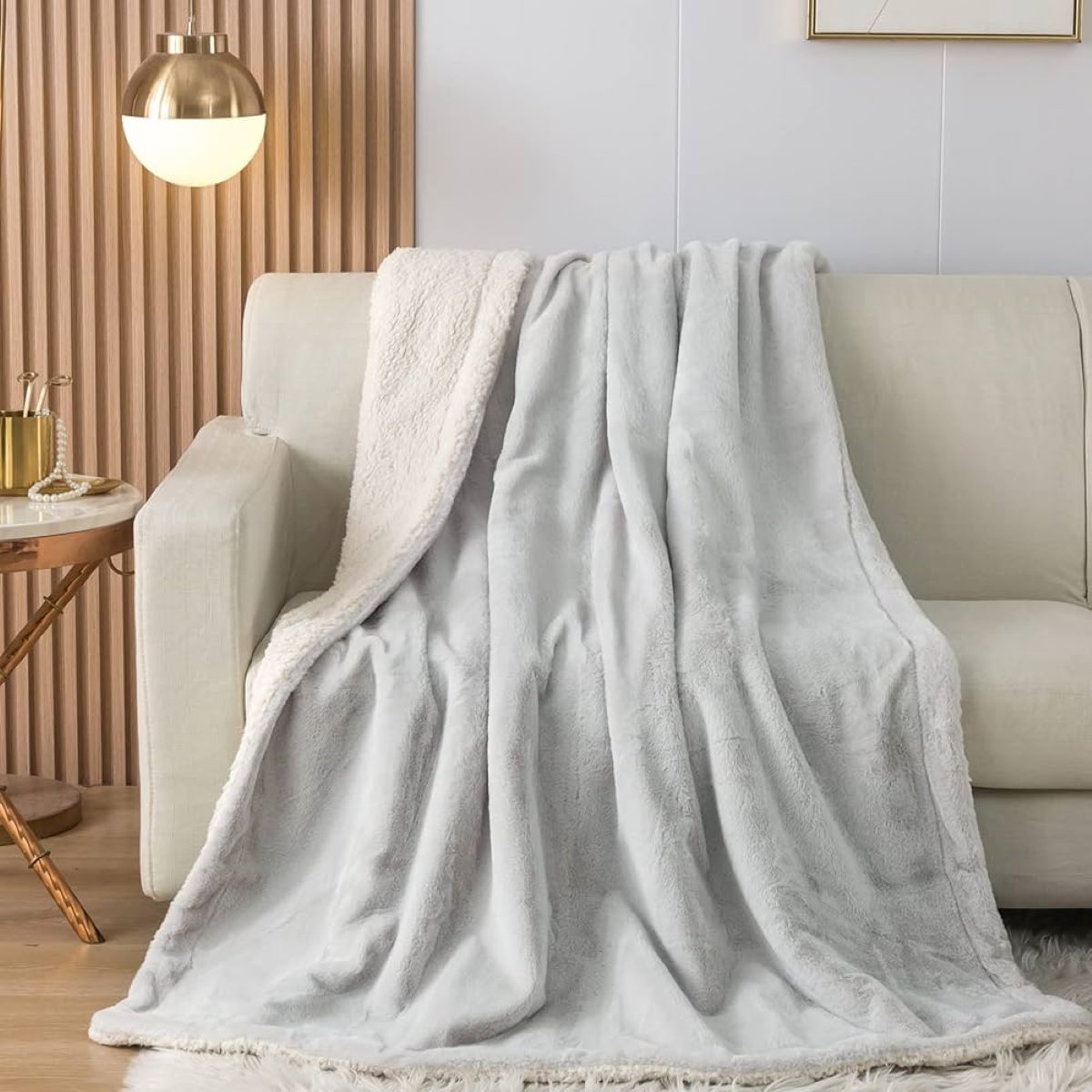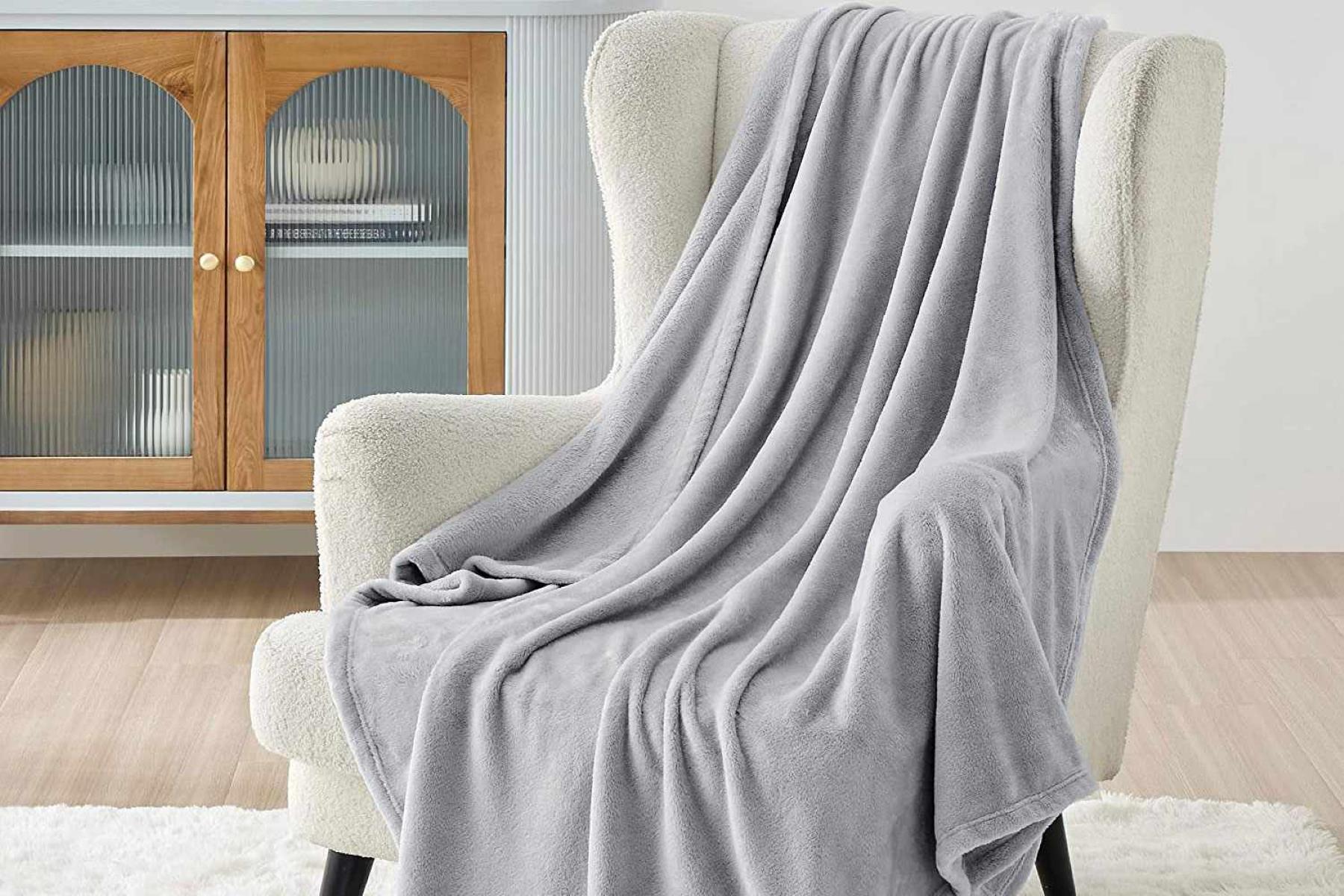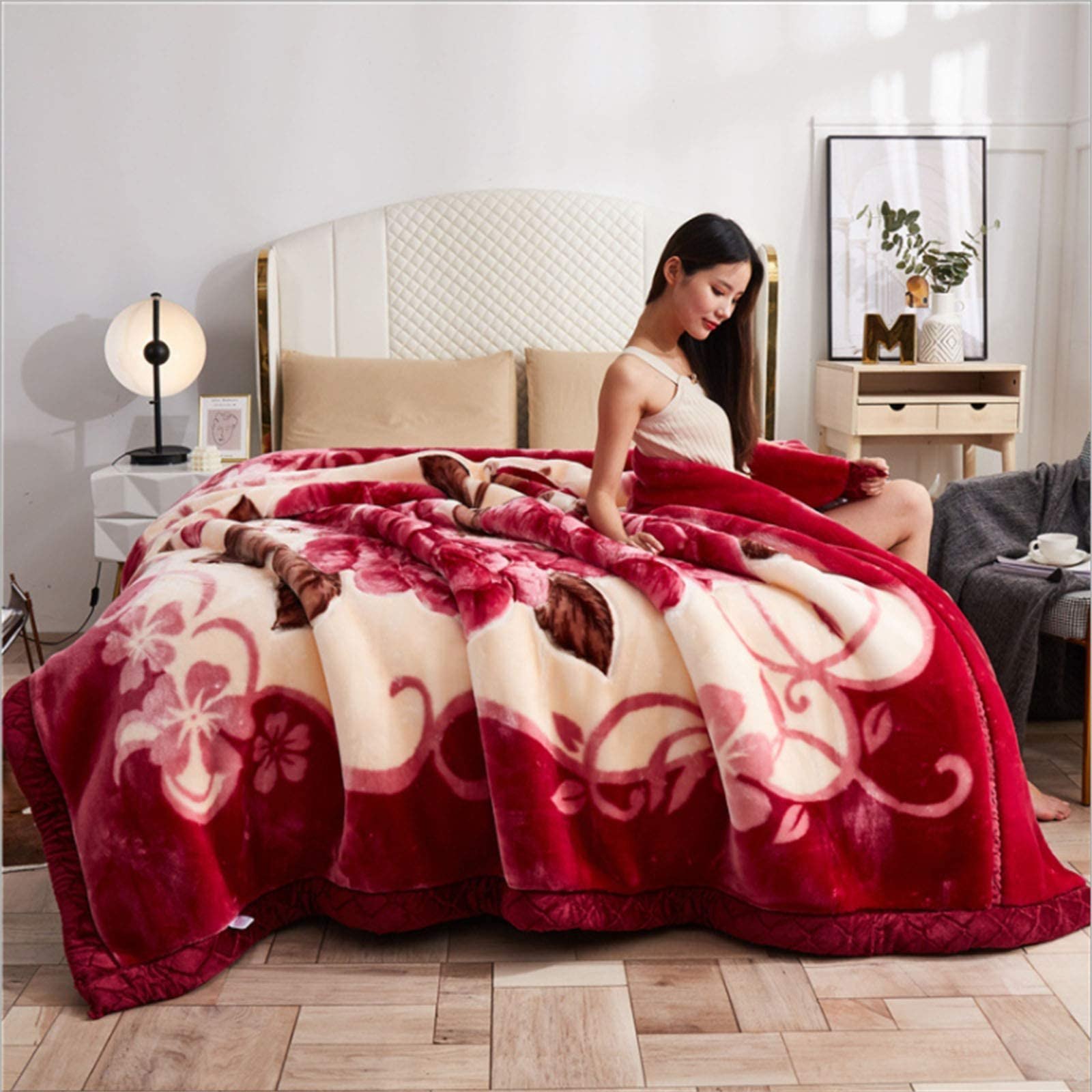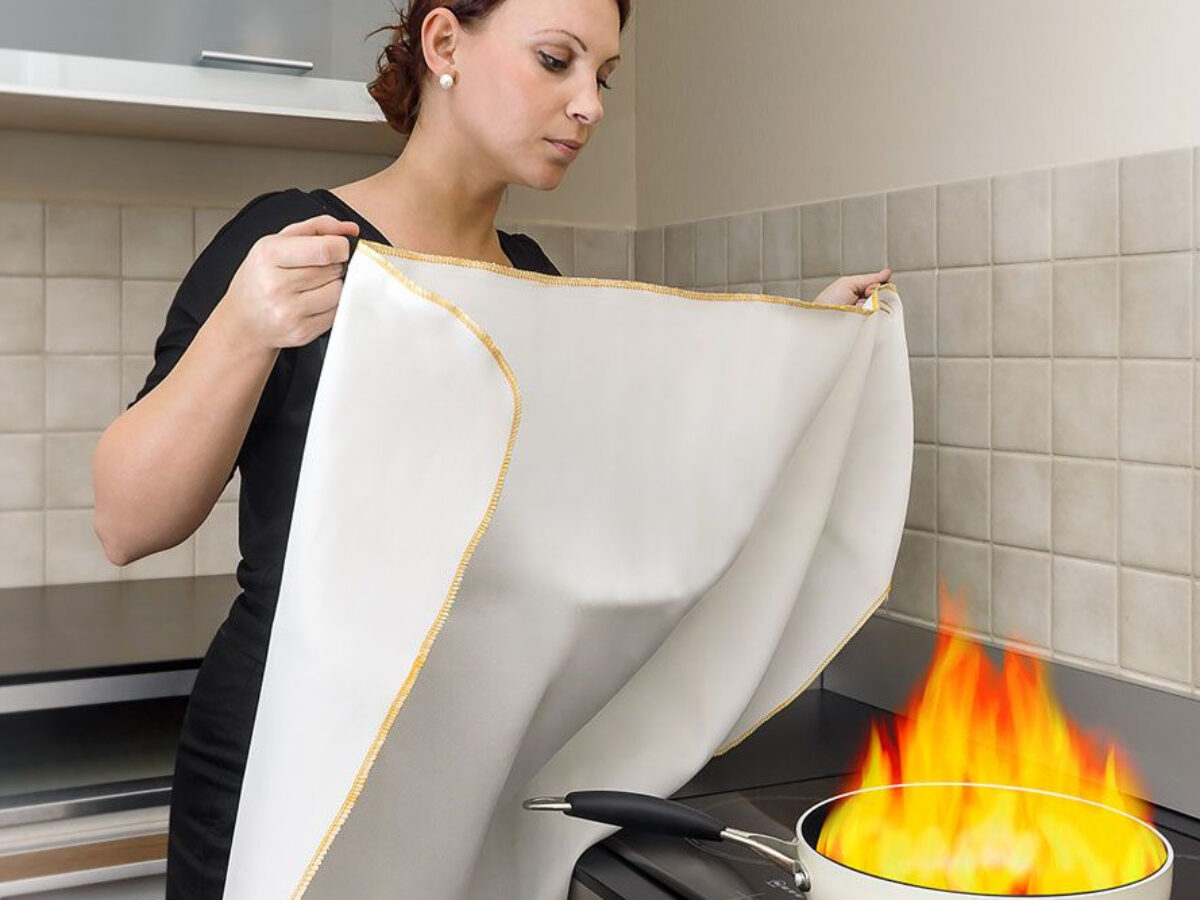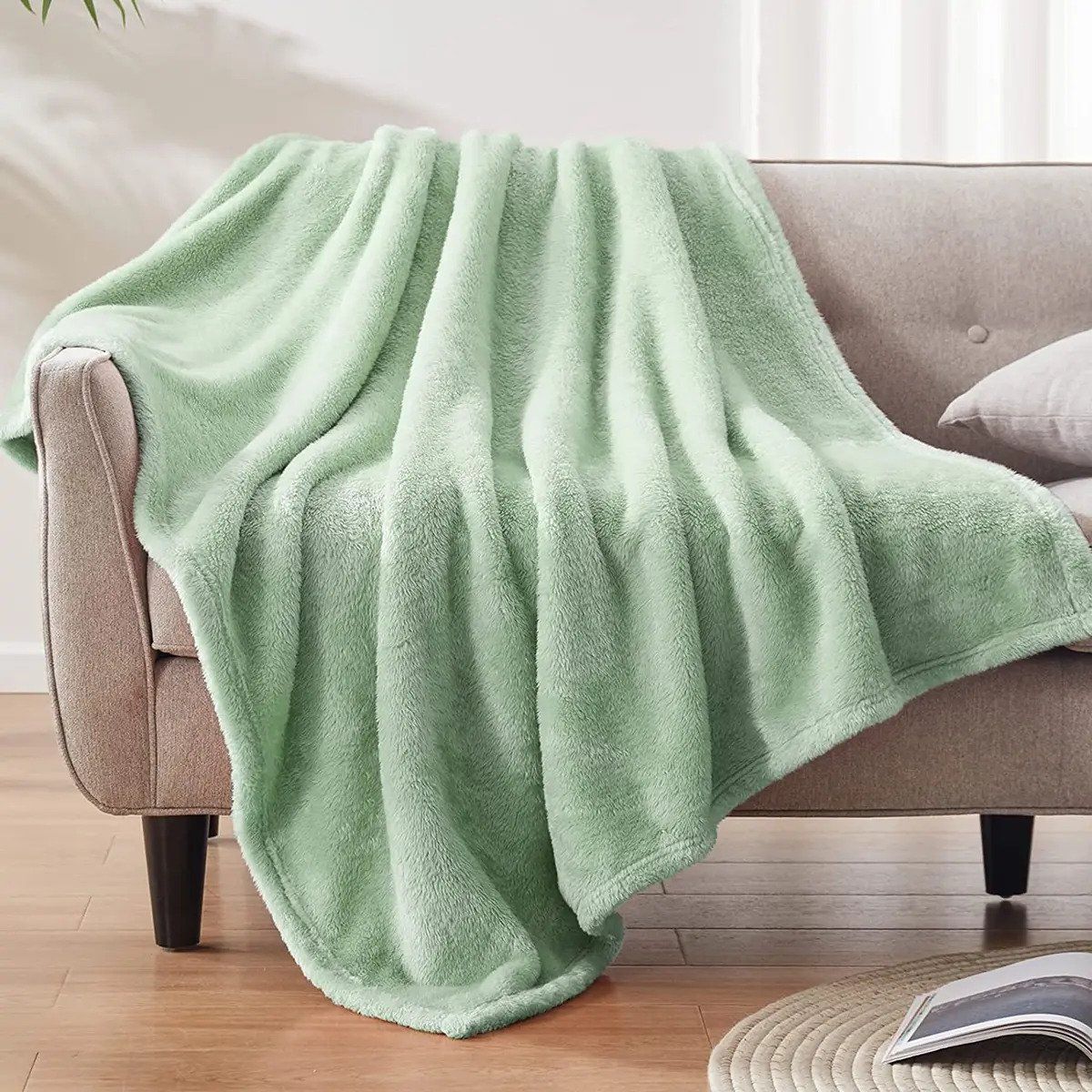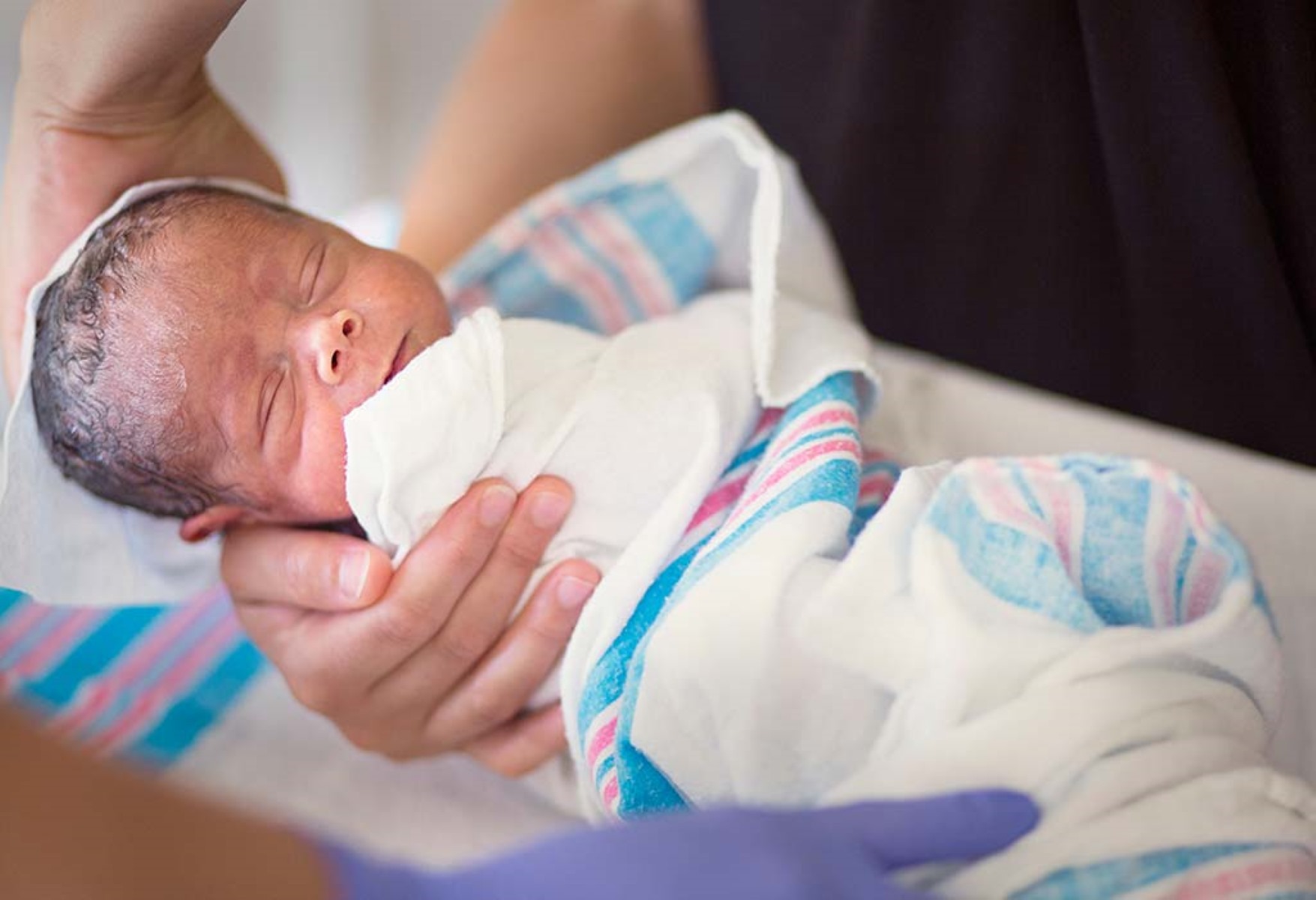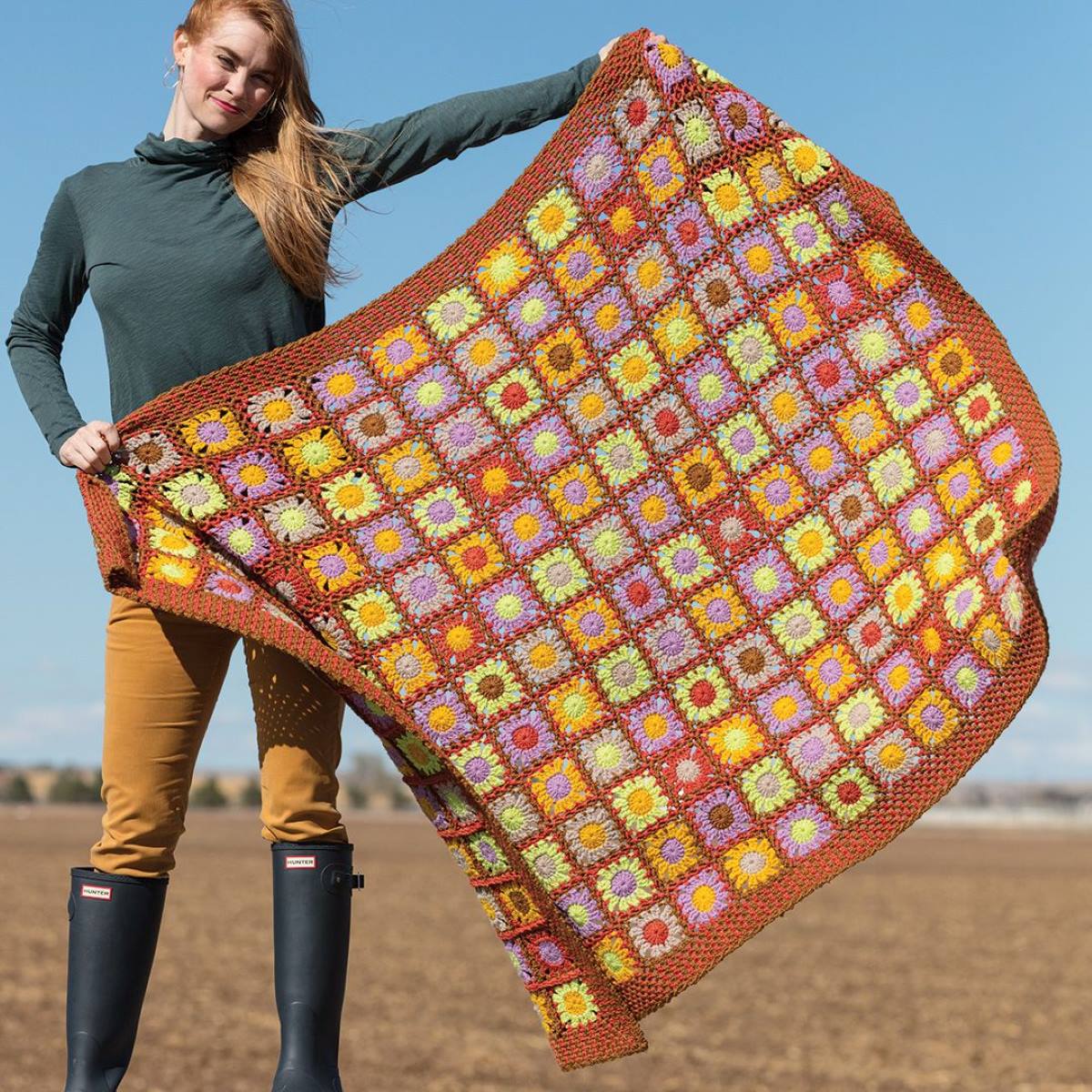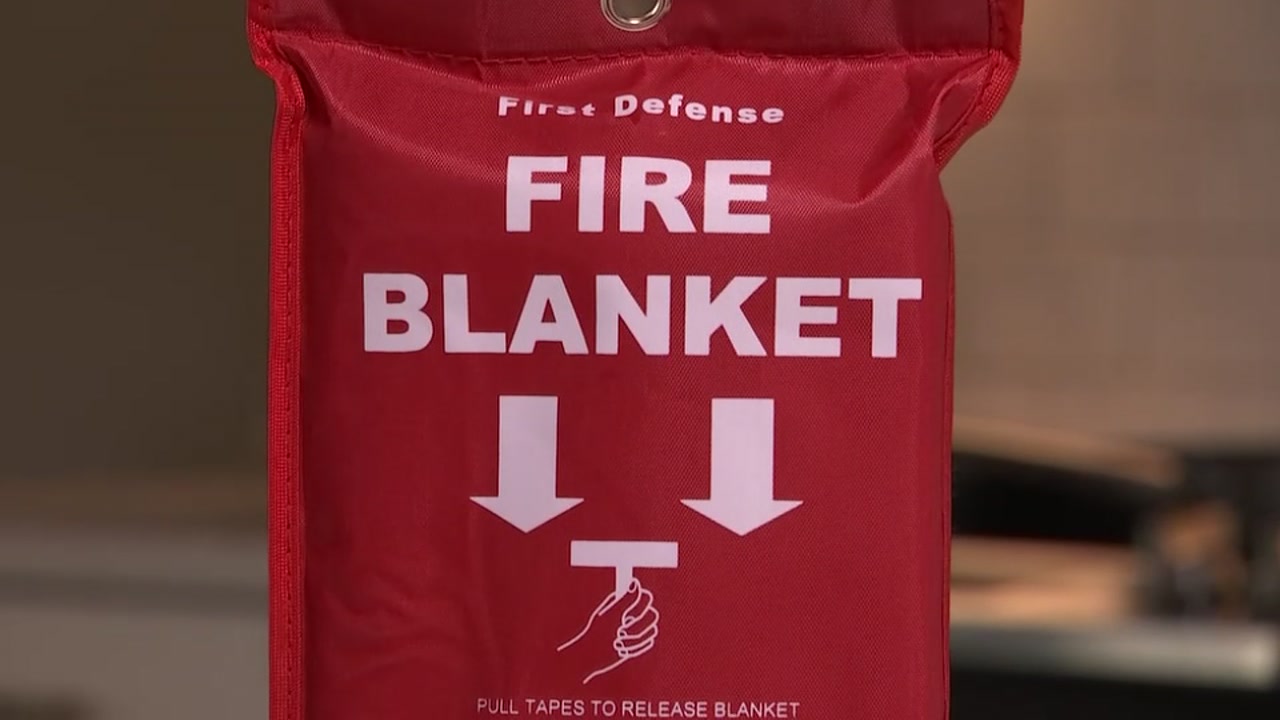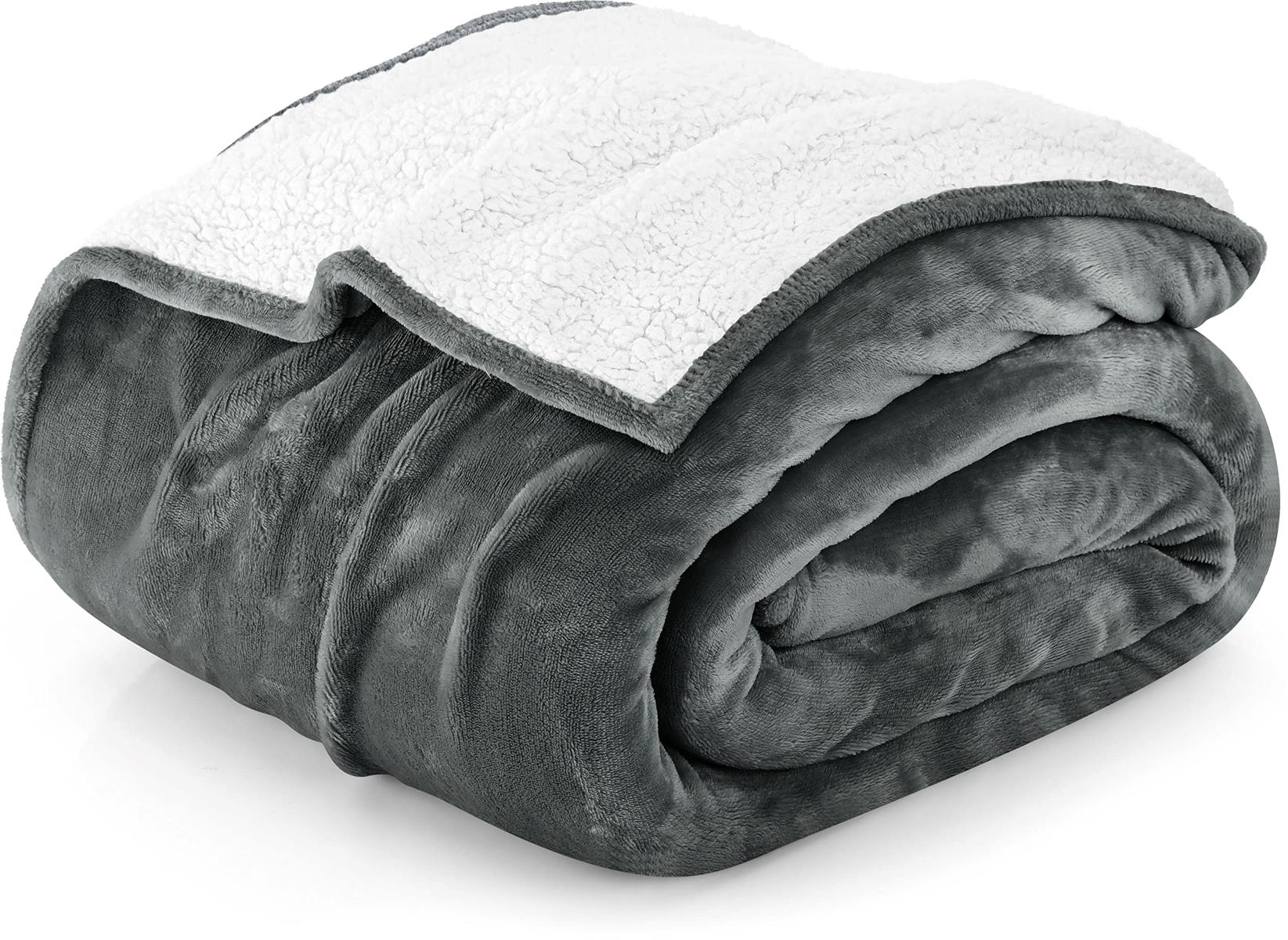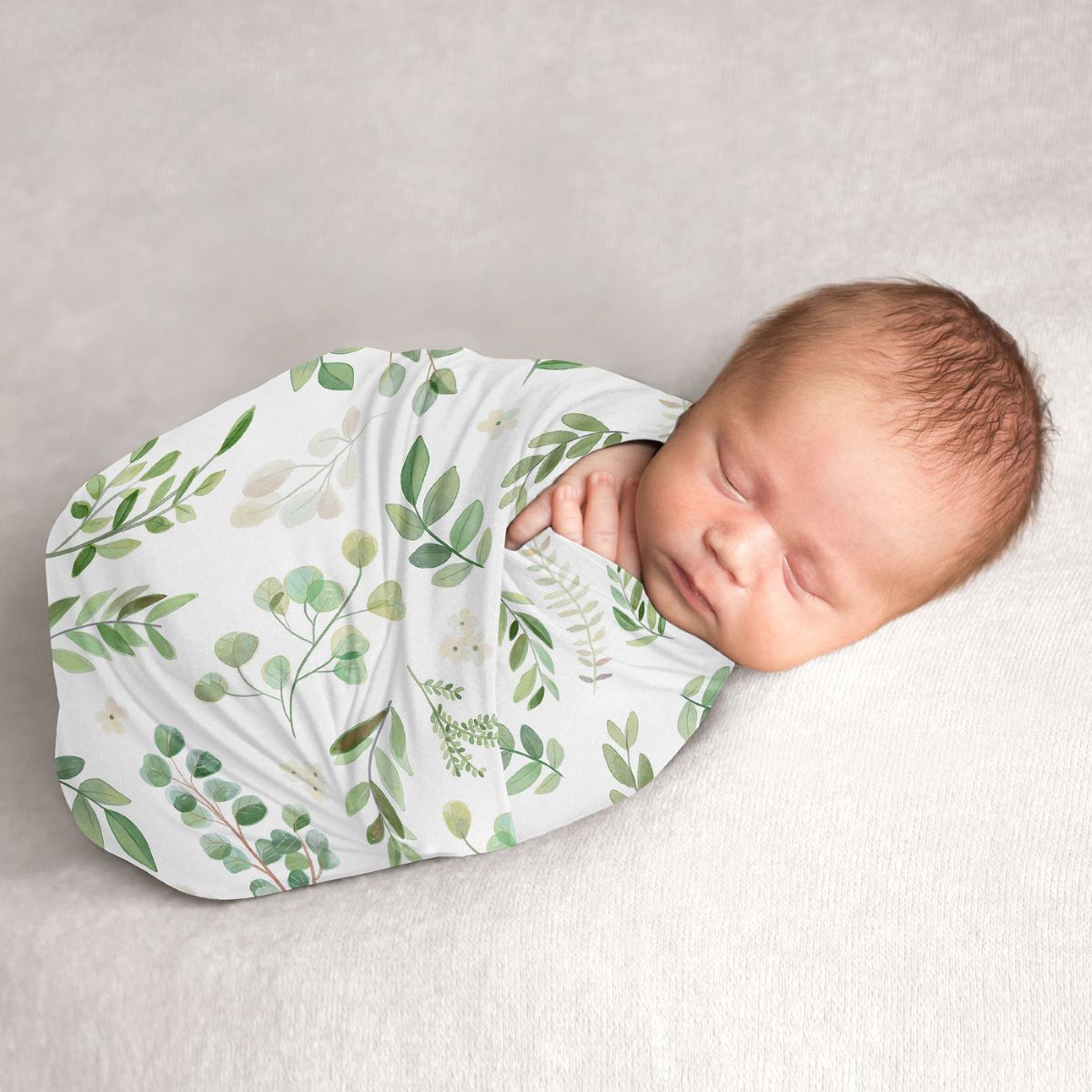

Articles
What Is A Swaddling Blanket
Modified: January 9, 2024
Discover the benefits of using swaddling blankets for your baby. Read our informative articles on how to choose the best swaddling blanket for your little one.
(Many of the links in this article redirect to a specific reviewed product. Your purchase of these products through affiliate links helps to generate commission for Storables.com, at no extra cost. Learn more)
Introduction
Welcome to the wonderful world of baby care! As a new parent or caregiver, you are embarking on an incredible journey filled with joy, love, and countless snuggles. One essential item that can provide comfort and security to your little one is a swaddling blanket. In this article, we will delve into the world of swaddling blankets, exploring their definition, benefits, different types, how to choose the right one, and important safety precautions to keep in mind.
So, what exactly is a swaddling blanket? In simple terms, a swaddling blanket is a piece of fabric designed to wrap snugly around a baby, mimicking the feeling of being in the womb. This gentle, snug wrapping can help soothe newborns and infants, making them feel secure and relaxed.
The benefits of swaddling are many. Firstly, swaddling can help calm a baby who may be experiencing discomfort or overstimulation, allowing them to settle and sleep more peacefully. The secure wrap of a swaddling blanket can also help prevent the startle reflex, which can often cause newborns to wake suddenly. Additionally, swaddling can promote better sleep patterns, as it creates a cozy and familiar environment for the baby.
When it comes to swaddling blankets, there are various types available in the market. The most common ones include traditional square blankets, swaddle wraps with Velcro or snaps, and sleep sacks with built-in swaddle wings. Each type has its own unique features and benefits, so it’s important to consider factors such as ease of use, comfort, and the baby’s individual needs when choosing the right swaddling blanket.
Choosing the right swaddling blanket is crucial for both the baby’s comfort and your peace of mind. Look for blankets made from soft and breathable materials like cotton or muslin, as these fabrics are gentle on a baby’s delicate skin. It’s also important to consider the size and shape of the blanket, ensuring it provides a snug fit without being too restrictive.
To use a swaddling blanket effectively, it’s essential to follow a few simple steps. Start by laying the blanket flat, folding down one corner to create a triangle shape. Place the baby on their back in the center of the blanket, with their neck and shoulders aligned with the folded corner. Wrap one side of the blanket snugly across the baby’s chest, tucking it securely under their back. Next, bring the bottom corner of the blanket up and over the baby’s feet, folding or tucking it in to keep their legs secure. Finally, bring the remaining side of the blanket across the baby’s chest, securing it with gentle tucks or folds.
Key Takeaways:
- Swaddling blankets provide a cozy, womb-like environment for babies, promoting better sleep, soothing discomfort, and reducing anxiety. Choose soft, breathable materials and follow safety precautions for a peaceful swaddling experience.
- As babies grow, pay attention to signs indicating it’s time to transition away from swaddling, such as increased mobility and self-soothing skills. Gradually introduce sleep sacks for a smooth transition to independent sleep.
Read more: How Big Is A Swaddle Blanket
Definition of a Swaddling Blanket
A swaddling blanket is a specially designed piece of fabric used to wrap a baby snugly, providing a sense of security and comfort. It is typically made from soft and breathable materials, such as cotton or muslin, to ensure the baby’s comfort. Swaddling has been practiced for centuries and is believed to mimic the feeling of being in the womb, promoting better sleep and soothing fussy babies.
The main purpose of a swaddling blanket is to recreate the cozy and contained environment that babies experience in the womb. By wrapping the baby securely, it helps to replicate the feeling of being held, making them feel safe and protected. Swaddling can help calm a newborn who may be easily startled or experiencing discomfort due to gas or colic.
Swaddling blankets come in various sizes and shapes, but the most common form is a square or rectangular blanket. These blankets are typically large enough to comfortably wrap around the baby, ensuring a snug fit without being too tight. Some swaddling blankets have specialized features, such as adjustable flaps or fasteners, to make the swaddling process easier and more secure.
It’s worth noting that swaddling is most commonly practiced during the early months of a baby’s life when they are adjusting to the outside world. As babies grow and develop, they gradually outgrow the need for swaddling and may prefer more freedom of movement while sleeping.
Swaddling blankets are not only practical but also serve as a decorative item. Many swaddling blankets are available in a wide range of colors, patterns, and adorable designs, adding a touch of style to your baby’s nursery or as a fashionable accessory to your everyday outings.
In recent years, swaddling has gained popularity among parents and caregivers due to the numerous benefits it offers. From promoting better sleep to reducing fussiness, swaddling blankets have become a go-to item in a newborn’s essential list. However, it’s important to swaddle a baby correctly to ensure their safety, as incorrect swaddling techniques can lead to overheating or restricted breathing.
Next, let’s explore the benefits of swaddling and how it can positively impact both babies and parents alike.
Benefits of Swaddling
Swaddling is believed to offer a range of benefits for both babies and parents. Let’s explore some of the key advantages of swaddling:
1. Soothing and Calming: Swaddling creates a secure and cozy environment for the baby, reminiscent of the womb. This snug wrapping helps to reduce the startle reflex, providing a sense of security and comfort. Swaddling can help soothe a fussy or colicky baby, promoting a calmer and more relaxed state.
2. Better Sleep: The gentle pressure and containment of a swaddling blanket can promote better sleep patterns for newborns. It helps to prevent the baby from flailing their limbs and waking themselves up, allowing them to sleep longer and more soundly.
3. Temperature Regulation: Swaddling blankets made from breathable materials, like cotton or muslin, can help regulate the baby’s body temperature. They provide warmth in cooler environments while preventing overheating, ensuring optimal comfort for the baby.
4. Reduces Anxiety: Swaddling can help reduce a baby’s anxiety levels when transitioning from the womb to the outside world. The snug wrap of a swaddling blanket mimics the feeling of being held, providing a sense of security and reducing feelings of anxiety or fear.
5. Promotes Self-Soothing: When swaddled, babies often find it easier to self-soothe by bringing their hands to their mouths. This self-soothing action can provide comfort and help the baby settle, reducing the need for external intervention.
6. Eases Colic and Reflux Symptoms: Swaddling can be beneficial for babies who experience colic or reflux. The gentle pressure of a swaddling blanket can help alleviate discomfort and minimize excessive crying, providing relief for both the baby and the parents.
7. Promotes Bonding: Swaddling allows parents and caregivers to have close physical contact with the baby, promoting a sense of bonding and security. The act of swaddling creates an opportunity for skin-to-skin contact, eye contact, and gentle touch, which are all essential elements for building a strong parent-child relationship.
While swaddling offers numerous benefits, it’s important to remember that not all babies enjoy being swaddled. Some babies may prefer more freedom of movement, so it’s essential to observe their cues and adjust accordingly. Additionally, swaddling should always be done safely, following proper guidelines and ensuring the baby’s comfort and well-being.
Now that we understand the benefits of swaddling, let’s dive into the different types of swaddling blankets available in the market.
Different Types of Swaddling Blankets
When it comes to swaddling blankets, there are various types available, each offering its own unique features and benefits. Here are some of the most common types of swaddling blankets:
1. Traditional Square Blankets: These are large, square-shaped blankets made from soft and breathable fabrics like cotton or muslin. They offer versatility, as they can be folded and adjusted to suit the baby’s size and preferences. Traditional square blankets are often preferred by parents who prefer a more traditional method of swaddling and enjoy the flexibility they provide.
2. Swaddle Wraps with Velcro or Snaps: These swaddling blankets come with adjustable flaps or closures, usually in the form of Velcro or snaps. They provide an easy and convenient way to swaddle the baby securely, ensuring a snug fit without the need for intricate folding. Swaddle wraps with Velcro or snaps are particularly popular among new parents and caregivers who may find traditional swaddling techniques challenging.
3. Sleep Sacks with Built-in Swaddle Wings: Sleep sacks with built-in swaddle wings offer a combination of a wearable blanket and a swaddle. These blankets have wings that can be fastened around the baby’s arms, keeping them comfortably wrapped and contained. Sleep sacks provide the added benefit of allowing freedom of movement for the baby’s legs while still providing a secure swaddle for the upper body.
4. Zip-up Swaddle Sleepers: Zip-up swaddle sleepers are all-in-one garments that incorporate a swaddle blanket into a sleep suit. They typically feature a zip closure that allows for easy access and quick diaper changes. Zip-up swaddle sleepers are a convenient option for parents who prefer a hassle-free swaddling experience.
5. Pod or Cocoon Swaddles: Pod or cocoon swaddles are snug-fitting wraps shaped like a pod or cocoon, designed to create a comforting and womb-like environment for the baby. They often have zipper or Velcro closures and provide a cozy, secure, and easily adjustable swaddle.
6. Muslin Swaddle Blankets: Muslin swaddle blankets are made from a lightweight and open-weave cotton fabric that is breathable and soft. They are highly versatile and can be used not only for swaddling but also as burp cloths, nursing covers, or stroller blankets.
When choosing a swaddling blanket, consider factors such as ease of use, your preferences, and the specific needs of your baby. It’s essential to opt for a blanket made from soft and breathable materials that will be gentle on your baby’s delicate skin. Additionally, consider the size and adjustability of the blanket to ensure a snug and secure fit.
Now that we’ve explored the different types of swaddling blankets available, let’s move on to how you can choose the right swaddling blanket for your baby.
How to Choose the Right Swaddling Blanket
Choosing the right swaddling blanket for your baby is essential to ensure their comfort and safety. Here are some factors to consider when selecting a swaddling blanket:
1. Material: Opt for a swaddling blanket made from soft and breathable materials, such as cotton or muslin. These fabrics are gentle on a baby’s delicate skin and help regulate their body temperature. Avoid synthetic fabrics that may cause irritation or overheat the baby.
2. Size: Consider the size of the swaddling blanket. It should be large enough to wrap around the baby securely but not so big that it becomes overwhelming or difficult to manage. Ideally, the blanket should be around 47×47 inches or larger to provide ample space for a proper swaddle.
3. Closure Mechanism: If you opt for a swaddling blanket with closures, such as Velcro or snaps, ensure they are secure and easy to fasten. They should allow for a snug and adjustable fit without being too tight. Test the closures to make sure they are durable and won’t easily come undone.
4. Ease of Use: Consider how easy the swaddling blanket is to use. If you prefer a simple and straightforward swaddling process, a blanket with adjustable flaps or a sleep sack with built-in swaddle wings may be a good option. On the other hand, if you enjoy the art of traditional swaddling, a large square blanket that can be folded and adjusted to your liking may be more suitable.
5. Design and Style: Swaddling blankets come in a variety of colors, patterns, and designs. Choose a style that appeals to you and complements your baby’s nursery or personal preferences. Remember that the blanket will not only be functional but also serve as an accessory in your baby’s daily ensemble.
6. Reviews and Recommendations: Before purchasing a swaddling blanket, read reviews from other parents or caregivers who have used the product. Their experiences can provide valuable insights into the quality, durability, and effectiveness of the blanket.
7. Consider the Baby’s Individual Needs: Every baby is unique, so consider your baby’s individual needs and preferences when choosing a swaddling blanket. Some babies may prefer a looser swaddle, while others may need a snugger wrap. Pay attention to your baby’s cues and adjust the swaddling technique and blanket accordingly.
Ultimately, the right swaddling blanket should provide a comfortable and secure wrapping experience for your baby. It should be easy to use, made from soft and breathable materials, and suit your personal preferences. Remember to follow proper swaddling techniques and safety guidelines to ensure your baby’s well-being.
Now that you know how to choose the right swaddling blanket, let’s move on to the next step: learning how to properly use a swaddling blanket to maximize its benefits.
When swaddling a baby, make sure the blanket is large enough to fully wrap around the baby and secure with a snug but not too tight fit to help them feel secure and calm.
Read more: How To Swaddle A Baby With A Blanket
Steps to Use a Swaddling Blanket
Swaddling a baby properly is essential for their comfort and safety. Here are the steps to effectively use a swaddling blanket:
1. Lay the blanket flat: Start by laying the swaddling blanket flat on a safe and clean surface, ensuring it is free from any wrinkles or creases. Smooth out the fabric to create a flat and even surface.
2. Fold down one corner: Take one corner of the blanket and fold it down to create a triangle shape. This folded corner will serve as a guide for positioning the baby’s neck and shoulders.
3. Place the baby on the blanket: Gently lay the baby on their back in the center of the blanket, positioning their neck and shoulders aligned with the folded corner of the blanket. Ensure that the baby’s head is above the folded edge of the blanket.
4. Secure one side across the chest: Take one side of the swaddling blanket and bring it snugly across the baby’s chest. Tuck the edge of the blanket securely underneath the baby’s back to help create a secure wrap. Make sure the fabric is not too tight and allows for natural movement of the baby’s hips and legs.
5. Bring the bottom up and over: Next, take the bottom corner of the blanket and bring it up and over the baby’s feet. Fold or tuck the edge of the blanket in, making sure the baby’s legs are comfortably wrapped and secure.
6. Wrap the remaining side across the chest: Lastly, take the remaining side of the swaddling blanket and bring it snugly across the baby’s chest. Secure the edge of the blanket with gentle tucks or folds, ensuring it is not too tight and allowing the baby to breathe comfortably.
Remember, the swaddle should be snug but not constricting. You should be able to slide your hand between the baby’s chest and the blanket to ensure they have enough room to breathe and move their hips and legs.
It’s important to note that the swaddling technique may vary slightly depending on the type of swaddling blanket you are using. Some blankets may have specific flaps or closures that need to be adjusted accordingly. Always refer to the manufacturer’s instructions and guidelines for your particular swaddling blanket.
Proper swaddling can help create a soothing and secure environment for your baby, promoting better sleep and reducing fussiness. However, it’s essential to follow safety precautions and avoid overheating by ensuring the baby is dressed appropriately for the ambient temperature.
Next, let’s explore some important safety precautions to keep in mind when using a swaddling blanket.
Safety Precautions When Swaddling
While swaddling can offer numerous benefits for your baby, it’s crucial to prioritize their safety during the swaddling process. Here are some important safety precautions to keep in mind:
1. Follow the ABCs of Safe Sleep: Always remember the ABCs of safe sleep: A for Alone, B for Back, and C for Crib. It is recommended to place a swaddled baby on their back to sleep, alone in a crib or bassinet with a firm mattress and no pillows, blankets, or stuffed toys that may pose a suffocation risk.
2. Choose the right size blanket: Ensure that the swaddling blanket is the appropriate size for your baby. The blanket should be large enough to wrap around them securely without loose fabric that could cover their face or pose a risk of entanglement.
3. Avoid overheating: Swaddling blankets should be made from breathable materials to prevent overheating. It’s important to dress the baby appropriately for the ambient temperature and monitor their body temperature to ensure they’re comfortable and not too warm.
4. Check for proper hip and leg positioning: When swaddling, allow enough room for the baby’s hips and legs to move naturally. A tight swaddle that restricts leg movement can increase the risk of developmental hip dysplasia. The baby’s legs should be able to flex and move freely in a comfortable position.
5. Don’t cover the baby’s head: Ensure that the swaddling blanket is secured below the baby’s neck, leaving their head and face uncovered. This helps prevent overheating and allows the baby to breathe freely.
6. Never place a swaddled baby on elevated surfaces: Avoid placing a swaddled baby on high surfaces, such as sofas, beds, or changing tables, as they can easily roll or slide off. Always keep the baby on a secure and flat surface during swaddling.
7. Regularly check for signs of discomfort: Monitor your baby while they are swaddled to ensure they are comfortable and not in distress. Look for signs of overheating, such as sweating or flushed skin, and make adjustments as necessary.
8. Stop swaddling according to developmental milestones: As your baby grows, they will start to show signs of rolling over. Once the baby can roll from back to front, it is time to stop swaddling. Swaddling can restrict their movement and pose a risk of suffocation if they roll onto their stomach.
9. Follow manufacturer’s instructions: If you are using a swaddling blanket with specific closures or features, be sure to follow the manufacturer’s instructions for proper usage and secure fastening.
By prioritizing safety and following these precautions, you can ensure that swaddling is a safe and soothing experience for your baby.
Now that we have covered the safety precautions, let’s discuss when it is time to stop swaddling your baby.
When to Stop Swaddling
Swaddling is a useful technique for soothing and comforting newborns. However, as your baby grows and develops, there comes a time when swaddling should be discontinued. Here are some signs that indicate it’s time to stop swaddling:
1. Rolling over: Once your baby starts rolling over consistently, it is an indication that they have gained more control over their movements. Swaddling can become dangerous at this stage, as it can restrict their ability to roll back and forth and increase the risk of suffocation. It is crucial to allow your baby the freedom to move and explore their environment.
2. Showing signs of wanting to escape: As babies grow, some may start showing signs of wanting to break free from the swaddle. They may wriggle, kick, or become more fussy during swaddling. This is a clear indication that they no longer find swaddling comforting, and it may be time to transition to a different sleep routine.
3. Improved self-soothing skills: Swaddling is often used to help newborns self-soothe by preventing the startle reflex and providing a sense of security. However, as your baby gets older, they will develop their self-soothing skills, such as thumb sucking or using a pacifier. If you notice your baby relying less on swaddling for comfort and finding alternative self-soothing methods, it may be a good time to stop swaddling.
4. Increased mobility: When your baby starts to kick their legs, move their arms, and explore their environment, it indicates that they are becoming more mobile. Swaddling may restrict their movements and hinder their development. Allowing them to have free limb movement will promote their motor skills and independence.
5. Age and developmental milestones: Generally, pediatricians recommend stopping swaddling around 2 to 3 months of age or when your baby starts showing signs of rolling over. However, each baby is unique, and their developmental milestones may vary. It’s important to pay attention to your baby’s individual development and consult with their pediatrician for guidance on when to stop swaddling.
6. Transitioning to a sleep sack or wearable blanket: When you notice it’s time to stop swaddling, consider transitioning your baby to a sleep sack or wearable blanket. These provide a cozy and secure environment for sleep while allowing for more freedom of movement. Sleep sacks are designed to keep the baby warm without covering their face or restricting their movements.
Transitioning away from swaddling can be done gradually. You can start by swaddling with one arm out or using a looser wrap. Gradually, you can completely transition to a sleep sack or wearable blanket once your baby is comfortable and adjusted to the change.
Remember, every baby is different, and they may have their own unique cues and readiness to stop swaddling. Trust your instincts as a parent and observe your baby’s responses to determine the appropriate time to transition away from swaddling.
Now that you have a better understanding of when to stop swaddling, let’s conclude our exploration of swaddling blankets.
Conclusion
Swaddling blankets play a significant role in providing comfort, security, and a peaceful sleeping environment for newborns and infants. The act of swaddling, when done correctly and safely, can have numerous benefits for both babies and parents alike.
We started our journey by understanding the definition of a swaddling blanket, which is a specially designed piece of fabric used to wrap a baby snugly, mimicking the feeling of being in the womb. We explored the benefits of swaddling, such as soothing and calming the baby, promoting better sleep, reducing anxiety, and enhancing self-soothing abilities.
Next, we delved into the different types of swaddling blankets available, including traditional square blankets, swaddle wraps with Velcro or snaps, sleep sacks with built-in swaddle wings, and muslin swaddle blankets. Each type offers unique features and benefits, allowing parents to choose the option that best suits their needs and preferences.
We then discussed how to choose the right swaddling blanket, considering factors such as material, size, ease of use, design, and the baby’s individual needs. It’s important to select a blanket made from soft and breathable materials, ensuring it provides a snug but not constricting fit for the baby.
We also went through the steps to properly use a swaddling blanket, emphasizing the importance of laying the blanket flat, folding down one corner, positioning the baby correctly, and securing the blanket snugly but comfortably around their chest and legs.
Ensuring the safety of the baby is paramount when swaddling. We discussed important safety precautions, such as following the ABCs of safe sleep, avoiding overheating, checking for proper hip and leg positioning, and avoiding covering the baby’s head.
Lastly, we explored when to stop swaddling, highlighting the signs that signal it’s time to transition away from swaddling, such as rolling over, showing signs of wanting to escape, improved self-soothing skills, increased mobility, and age and developmental milestones. It’s crucial to monitor the baby’s cues and consult with their pediatrician for guidance on when to stop swaddling.
Swaddling blankets, when used appropriately and safely, can be a valuable tool in providing comfort and security for newborns and infants. Remember to always adhere to safety guidelines, monitor your baby’s cues, and make adjustments as necessary to ensure their well-being and optimal sleep.
As you embark on this remarkable journey of parenthood or caregiver, may the use of a swaddling blanket bring you and your baby moments of tranquility, love, and peaceful slumber.
Frequently Asked Questions about What Is A Swaddling Blanket
Was this page helpful?
At Storables.com, we guarantee accurate and reliable information. Our content, validated by Expert Board Contributors, is crafted following stringent Editorial Policies. We're committed to providing you with well-researched, expert-backed insights for all your informational needs.

